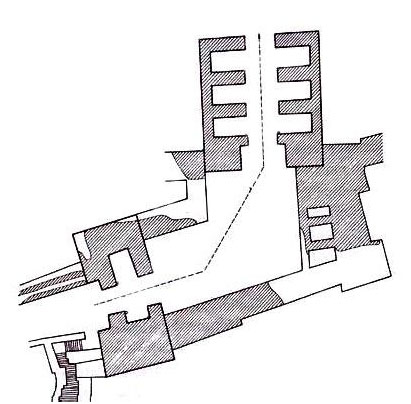Strategic Design
Long ago, in a land far away, there existed an ancient ‘city gate’. This is a non-fiction story that came to light, as part of an archeological dig that occurred in Israel. The account provides interesting parallels to how strategic design was used throughout history. It’s an astonishing account of a real-life city gate that reveals timeless applications.
The Story of the Megiddo Gates:
The ancient city gate I am referring to, is the discovery of the Gates of ‘Megiddo’. It was through the archeological dig, a discovery revealed an ancient design of a long lost city gate. The design of the gate system entailed an enclosed passageway that was composed of internal chambers. It appears the chambers served to provide added protection, if any unwanted invaders managed to enter the gate system.

The design of the ‘Megiddo Gate’ (sketch depicted above) reveals the floor plan that was discovered. As the details emerged, it became clear that this was an unusual gate system that included much more than a single point of protection. But contained a series of redundant protections. In addition, it was later understood from historical records that the gate contained a civic function.
The archeological dig also revealed that the structure was built with a substantial foundation and durable materials that could still be observed. In addition, the wall structure was built to include an internal passage way that could access the noted chambers. In turn the city gate became a fortified structure that housed diverse functions while also protecting the city. The design fundamentally changed the typical operation of the city entrance gate and operation. It was as though the city gate itself had become a symbol of governance for this city.
This ancient city gate revealed a design mindset, that incorporated an understanding of the various challenges of its day. The Megiddo gates provided an innovative design approach, that made it extraordinarily difficult for an apposing army to enter through this gate. In addition, the design provided a limited amount of space which seems to have easily supported supplied the city but made it difficult to have “uninvited guests” enter.
The Essence of Strategic Design:
The noted case study of the ‘Megiddo city gate’, provides a case study into advanced functions and operations that dramatically improved how this city operated and was protected. The design solution represented advancements over the status quo. Interestingly, the gate advancements did not require new material, or technology, but rather demonstrated an emphasis on innovation through its design. The design demonstrates an emphasis on utilizing wisdom and understanding in its design process to solve some of the problems of its day.
Challenges Can inspire Good Design:
From a modern perspective, the design of the Megiddo city gate, depicts a fascinating account strategic design. Solving major challenge’s of its day with strategy and design. This astonishing case study delineates a way of advancing solutions that in addition to resolving one problem can add great value, and benefit for the human beings who lived in this city. It became much more than a fancy facade or skin deep solution, it was a unique and thoughtful solution.
Modern Day Applications:
A work of architecture requires vision, analysis, conceptualizing and planning. In an endeavor such as this can benefit from utilizing the principles of strategic design, both to realize solutions and transcend the problem. Much can be accomplished with this methodology and way of thinking. The city gates of Megiddo depicts an example of an ancient city gate that used strategic design to make substantial improvements. In the process it created a seat of governance and a high level of protection against disorder and chaos.
Summary:
- Megiddo’s city gate provides a real-life example of how strategic design is used.
- Improving function, creating order, enhancing operations — creates value.
- A holistic approach — harmonizes the project
- A powerful design tool that created a prototype solution that could be applied to other cities.
- Solving an identified problem creatively.
- Advancing solutions that have multi benefits.
- Strategic Design represents both the art and the science.
- Multi-faceted methodology to enhance and improve anything.
- Secure and safe environments add to the quality of life.
- Provides an excellent feasibility analysis tool — prior to construction.
- A tool to evaluate and minimize risk.

